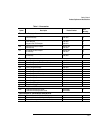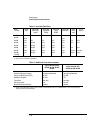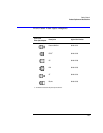
2-4
Using the Instrument
Setting Up Measurements
Operating the Internal White Light Source
For Option 002 only
Option 002 provides a built-in white light source which is a stable, broadband
light source for swept-wavelength stimulus response testing from 900 nm to
1700 nm. The light source is ideal to perform stimulus-response measure-
ments, and measure photodetector responsivity. Refer to “Light Source” on
page 3-33.
Note Although the light source’s lamp lasts an exceptionally long time, turn off the
light when not in use to extend the lamp’s lifetime. On the front panel, press
System, Optimum, Light Source, Select off.
1 From the front panel, press System > Options > Light Source > Select Off.
Performing Stimulus-Response Measurements
Stimulus-response measurements characterize optical components for loss
(or gain) versus wavelength. You can characterize devices such as couplers,
switches, filters, fibers, and amplifiers.
To perform stimulus-response measurements, you must have an amplitude-
stable broadband light source. Although a white-light source provides the wid-
est wavelength input for stimulus-response measurements, you can also use
an LED or the spontaneous emission from an optical amplifier.
The displayed response is a convolution of the analyzer’s resolution bandwidth
and the amplitude response of the device under test. Because of this convolu-
tion, the analyzer’s resolution bandwidth affects both dynamic range and the
ability to resolve large amplitude changes versus wavelength. Wide resolution
bandwidths increase the ability to resolve large amplitude changes.
You can display two responses at the same time. The output response versus
wavelength is displayed. The displayed trace shows the ratio of the output
power to the input power expressed as a logarithm (dB).
Making ratioed measurements is sometimes referred to as normalization. Nor-
malized measurements are used to negate wavelength dependencies in the
source. The ratio is achieved through simple trace subtraction using logarith-
mic amplitude scales. This is possible because of the following logarithmic
equality:
response (dB) = 10 log
output power
input power
------------------------------------
èø
æö


















